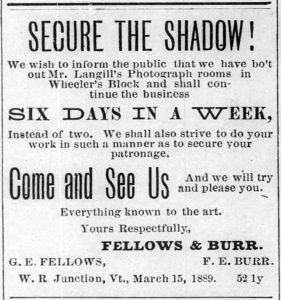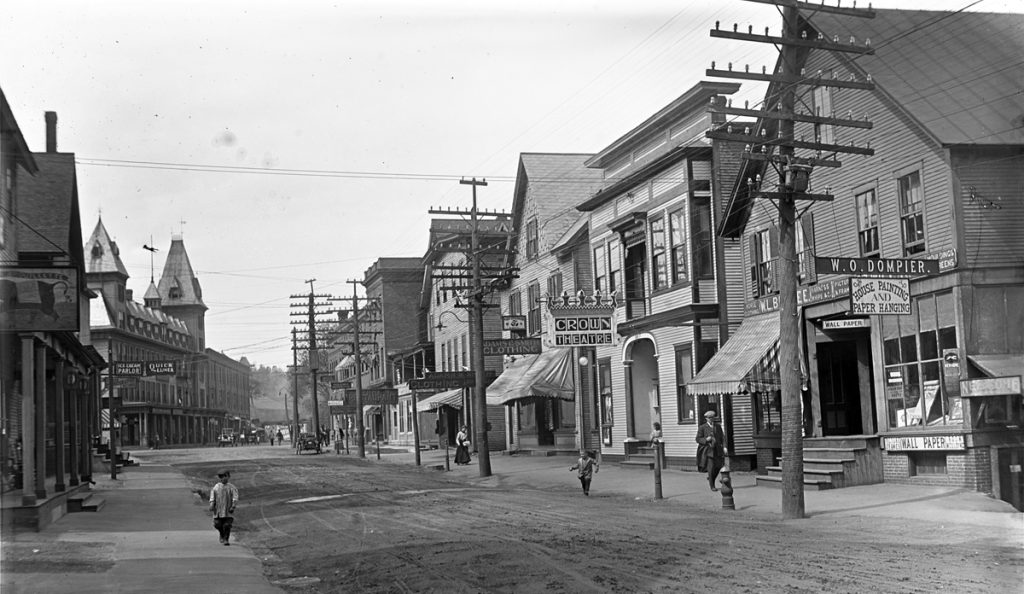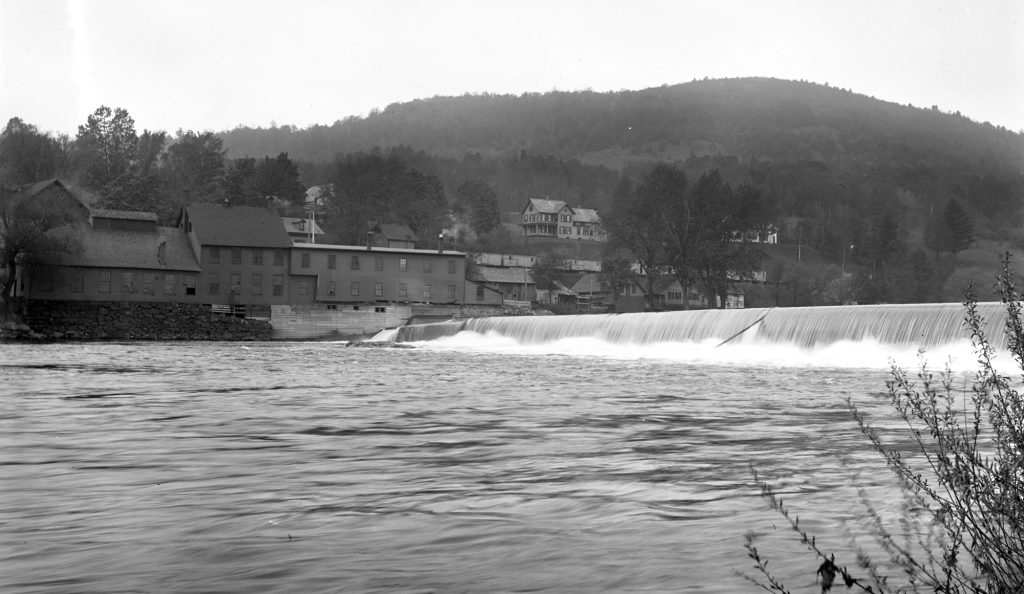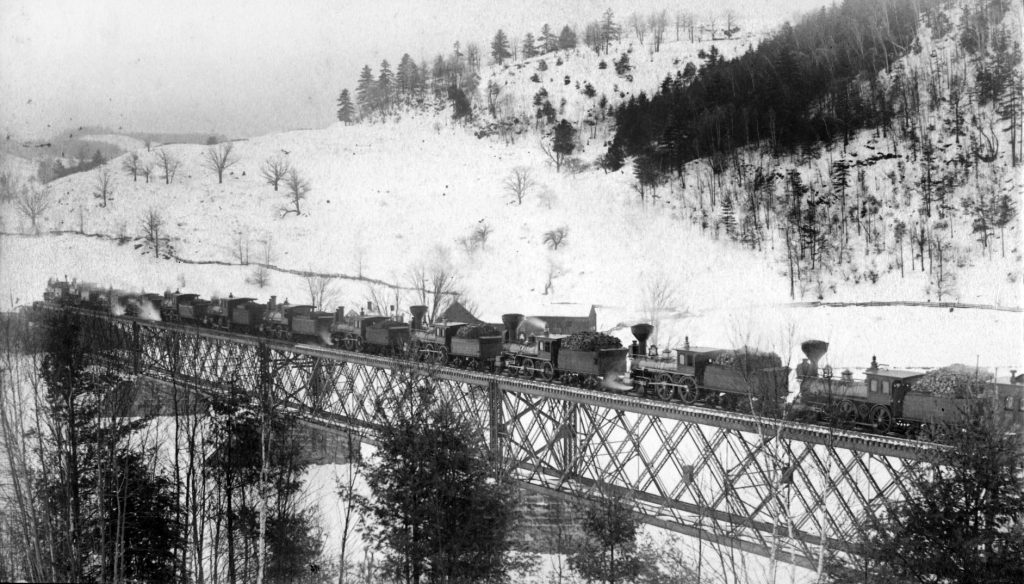George Fellows Brings Early Hartford to Life
By Scott Fletcher
In 1883, George E. Fellows married Jennie Halleck and opened a photography studio in South Royalton, VT. The business didn’t last and they soon moved to Lyme, NH. Fellows is not mentioned in local papers until 1886 when he and his wife welcomed a daughter. In October of that year, they moved to White River Junction where George opened a small photo studio.
In March, 1888, the St. Albans Daily Messenger reports that Fellows was one of two photographers who captured the testing of Hartford’s new bridge across the White River, which replaced the one destroyed in the tragic train wreck of 1887. The dramatic photos show twelve locomotives with fully loaded coal tenders parked on the 650-foot bridge to show that it could support 854 tons.

The following year, Fellows and F.E. Burr purchased the photographic studio of H.H.H. Langill in White River Junction. The Landmark reported, “G.E. Fellows and F.E. Burr of Hanover, have formed a partnership and bought out Mr. Langill, who has carried on the photograph business in the Wheeler block for some time. These gentlemen are both artists of no mean skill and we predict for them a prosperous career. They can be found at their studio in Wheeler’s block every day in the week.” The Landmark, March 15, 1889
In July 1889, F.E. Burr purchased Fellow’s share of the business and Fellows opened a studio in Claremont, NH. The following year, however, Fellows returned to White River Junction and bought the business back from Burr. He would document people and places in and around Hartford for the next twenty-five years.
Fellows used the prevailing technique, which was to spread a light-sensitive silver gelatin on a five-inch wide glass plate. Fellows advertised that the process was “instantaneous,” meaning he could photograph moving scenes and make portraits of children.
Another service Fellows offered was crayon portraits, which he did by projecting an image from a negative onto a sheet of drawing paper and then rendering a color image by hand using ink and crayons.
In 1896, The Landmark noted that, “George E. Fellows’ studio in the new building south of the National Bank is a pleasant place to visit, whether one contemplates sitting for his photograph or not. The specimens of photographic and crayon work are finely done, and their variety adds interest to the collection.” The Landmark, August 7, 1896.
Jennie Fellows died in 1906, and George continued to make photographs in White River Junction and neighboring communities. In 1915, George Fellows married Emma Lockwood and purchased a large farm in North Charlestown, NH.
That same year, he sold the photography business and, at some point, gave his collection of 1,046 glass plates and eighty-five celluloid negatives to Hanover photographer Henry H. Barrett. They are now archived by the Rauner Special Collections Library at Dartmouth College.
The collection documents life around Hartford including forgotten scenes like the dam on the White River that powered the Hartford Woolen Mill and lively activity at the Vermont State Fair. Fellows also captured his farmhouse, outbuildings, and animals in North Charlestown.
George Fellows was often seen around Hartford at Odd Fellows and Masons meetings until he died in 1931. He rests in the Hartford Cemetery.
Hartford Historical Society
1461 Maple St.
Hartford, VT 05047
(802) 296-3132
info@hartfordhistory.org



